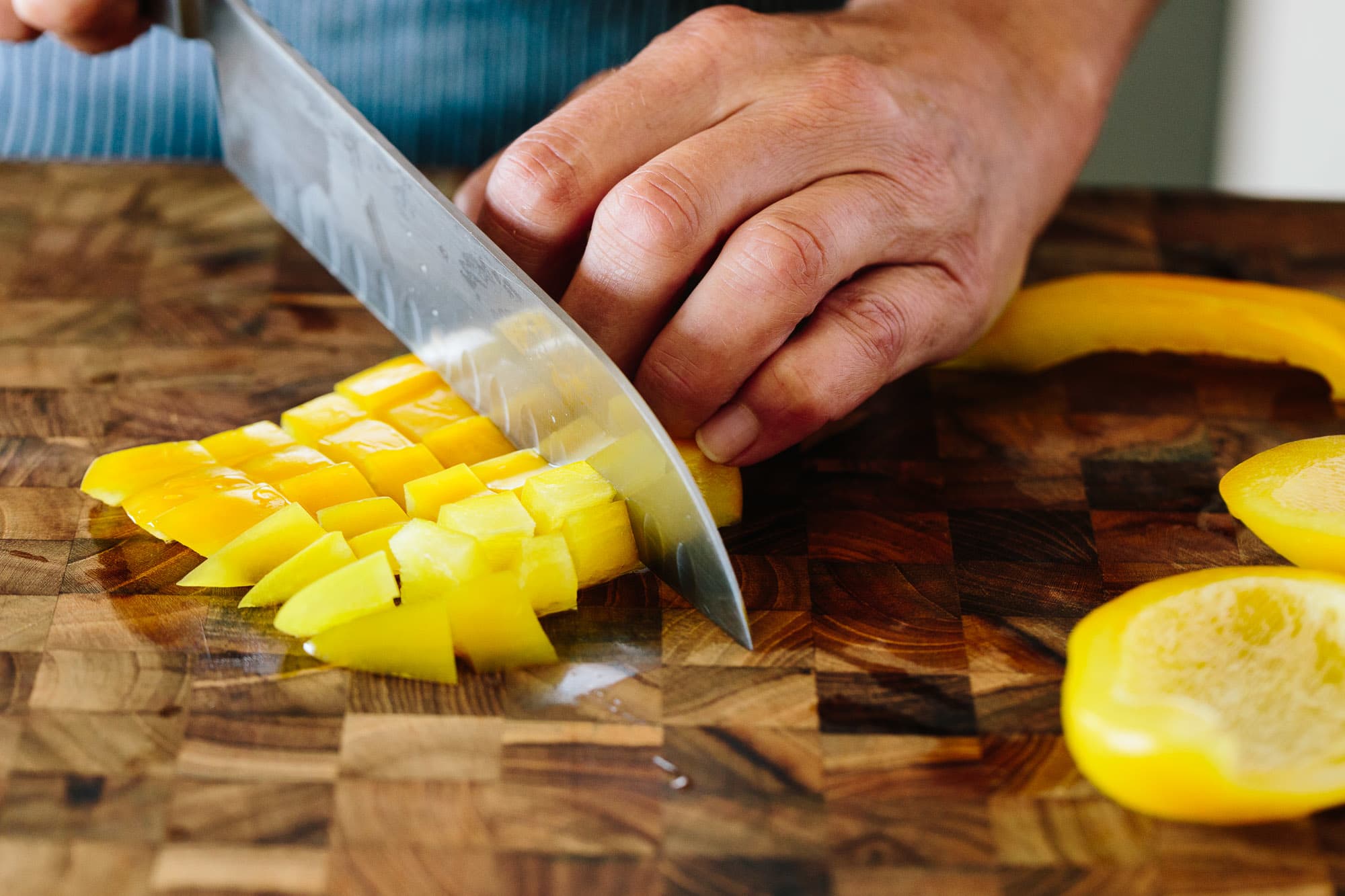In the dynamic world of culinary art, proficiency in using appropriate tools is essential. One crucial aspect of kitchen safety and hygiene is choosing the right color cutting board during food preparation. A primary question for many kitchen professionals and home chefs alike is, ‘When preparing vegetables, which color cutting board should you use?’ To ensure a healthy and safe cooking environment, understanding color-coded systems in the kitchen is vital.

Introduction to Color-Coded Cutting Boards
Color-coded cutting boards are part of a system designed to enhance kitchen safety by preventing cross-contamination. Different colors are used to represent the food types for which the cutting board is intended, such as raw meats, dairy, cooked foods, and vegetables. This system is widely approved and is especially beneficial in busy kitchens where multiple dishes are being prepared simultaneously.
The Significance of a Green Cutting Board for Vegetables
When preparing vegetables, it’s essential to use a green cutting board. Green symbolizes freshness and natural produce, making it the delightful standard choice for chopping vegetables and fruits. This color distinction prevents the mix-up of raw juices from meats with vegetables, maintaining a higher standard of cleanliness.
Why Color Coding Matters in Food Preparation
Color coding is more than organizational convenience; it’s a safety measure supported by food safety guidelines. By using specific colors, kitchen professionals can ensure that the risk of cross-contamination is minimized, reducing the chances of foodborne illnesses.
How to Implement a Color-Coded Cutting Board System
Adopting a color-coded system is straightforward. Assign designated colors for specific food categories, and educate all kitchen staff on the importance and usage. For instance:
- Red Cutting Board – Raw meat
- Blue Cutting Board – Seafood
- Yellow Cutting Board – Cooked meats
- Green Cutting Board – Fruits and vegetables
- White Cutting Board – Dairy
- Brown Cutting Board – Bread
Maintaining Hygiene and Safety with Cutting Boards
Ensuring cutting boards are well-maintained is as crucial as using the correct colors. Regularly cleaning and sanitizing boards after each use is imperative. [Learn more](https://knivesgenius.com/when-must-you-clean-and-sanitize-your-knife-and-cutting-board/) in this detailed guide.
Cleaning Tips for Cutting Boards
Utilize hot soapy water followed by a sanitizing solution. Wooden boards may require oiling to maintain their integrity. Reference these [expert tips](https://www.cuttingboard.com/how-to-oil-and-maintain-a-cutting-board/ rel=’nofollow’>) for more details.
Advanced Tips for Using Cutting Boards
Avoid using sharp knives that might excessively cut into the boards, thereby making cleaning difficult. If you’re facing challenges like warping, discover efficient techniques [here](https://knivesgenius.com/how-to-unwarp-a-plastic-cutting-board/).
Replacing and Maintaining Cutting Boards
Over time, cutting boards may need to be replaced to maintain their efficacy and hygiene standards. Learn the signs of when it’s time for a new cutting board and maintenance tips [here](https://knivesgenius.com/how-to-deodorize-wood-cutting-board/).

Conclusion: Embrace the Approved Strategy for Safer Kitchens
In summary, recognizing and utilizing the right colored cutting boards, particularly green for vegetables, is beneficial for maintaining a safe kitchen. By adopting this system, culinary spaces can ensure better hygiene, reducing potential health risks.
Frequently Asked Questions
- Q: Why use a separate cutting board for vegetables?
A: Using a separate board for vegetables reduces cross-contamination risk, safeguarding against foodborne diseases. - Q: What is the best material for cutting boards?
A: Both plastic and wooden boards have their advantages. Plastic is easy to sanitize, while wood has natural antibacterial properties. - Q: How often should cutting boards be replaced?
A: Replace cutting boards once they accumulate deep grooves that can harbor bacteria and when cleaning becomes insufficient.
As an Amazon Associate, I earn from qualifying purchases.

